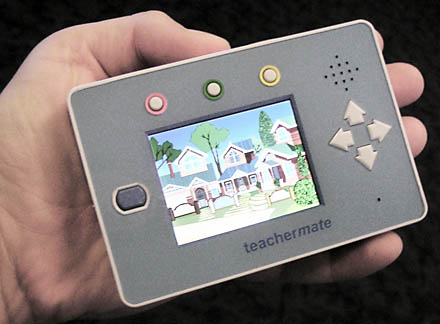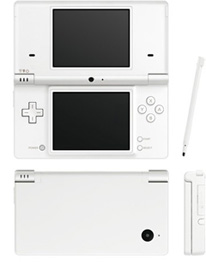Friday, December 5th, 2008
[Here’s a recent article I wrote for the November/December 2008 issue of Essentials Magazine, which is an education industry magazine published by the not-for-profit, international trade organization called National School Supply and Equipment Association (NSSEA.]

Advances in technology suggest that some day soon classroom instruction powered by low cost computing devices could be a real possibility. When Nicholas Negroponte, founder/chairman of One Laptop Per Child (OLPC), announced his vision of a computer so inexpensive that every child on the planet could own one, many of us wished that such a vision could come true quickly if the benefits to education were real. Just after the first low cost XO Laptops were coming off the assembly line at a cost that was under $180 a unit, other large computer manufacturers announced that they too would be developing competing low cost computers. The race for the student laptop had begun. However, to date, no other computer manufacturer has yet been able to beat the XO laptop price. What the world had failed to appreciate by the OLPC initiative, was that a new age of computing is upon us.
A place where many technology enthusiasts go to watch the future of computing unveil itself is on a Website called Gizmodo. It’s a favorite to inventors, technologists, and even toy manufacturers. Just this past March, a new learning product for classroom use was announced and claimed a low price tag of a mere $50. This handheld device that looks like it might be a distant cousin to the Game Boy is called the TeacherMate. Could this be the next low cost classroom innovation to keep an eye on?
The company that developed the TeacherMate is called Innovations for Learning and is located in the education rich surroundings of Evanston, IL. This not-for-profit company was founded over 15 years ago by former technology lawyer Seth Weinberger. Seth started his company out of a frustration for trying to find meaningful and effective educational software to use with young children. Since he couldn’t find what he wanted from the marketplace, he decided to start developing reading and math software on his own with a small team of talented educators. But developing effective software for classroom use was only part of the problem. The larger issue was that schools had ineffective technology solutions in place; PCs that were outdated or not working at all, varying degrees of Internet connectivity, and many other commonly heard complaints about technology that was just not ready to be used at any moment’s notice by teachers.
Innovations for Learning began the search for low cost, hassle free, ready to use technology solutions to bring into the classroom. After an exhaustive search that spanned many years and included a number of complicated licensing and development agreements with multi-million dollar businesses, the company made a bold decision; it decided to make its own educational hardware platform.
When I received a TeacherMate to evaluate, a few things stood out immediately. In addition, its small size, the backlit color screen, and game like interface, it had a USB slot for transferring files and information as well as an SD slot for additional file storage. When I looked under the hood I was amazed. The device had a 500 MB hard drive and used a GNash player on a Linux system to play back Adobe Flash files. This meant that the platform was an open system, something almost all other portable computing devices are not. This speaks volumes about its possibilities for developers and publishers.
Once the TeacherMate was off the drawing table, Innovations for Learning began to port its learning software to the device, and this past March began a two-month pilot program in 15 schools with 450 students from the Chicago area. In addition, an education research heavy, The Spencer Foundation, also expressed interest in the TeacherMate and funded its own research effort alongside the rollout. This study is reported to be close to completion and should be available on the Innovations for Learning Website soon. Today, the TeacherMate is being used by over 8, 000 kindergarten and first grade students across 250 schools on the west and south sides of Chicago. By the end of the year a second grade software product will be ready for use as will other grades in future years.
The current business model of the TeacherMate is to offer a subscription package, complete with all the hardware and software necessary to use in a classroom setting, at a cost of $50 per student per school year. Included in that price is all the training and support necessary for teachers to succeed. It also comes with a TeacherMate docking station and simplified Learning Management System so when teachers collect TeacherMates from students at the end of a classroom period, they can dock the devices in one location, download all of the student progress data to their computer, and review the results. Teachers can also review audio recordings made by students on the device from reading software and even define the next lesson for students through the LMS. Currently the only software available on the device is by Innovations for Learning, but founder Seth Weinberger states that publishers are exploring the device as a solution to their own learning software problems.
Here’s the bottom line for forward thinking publishers, administrators, and teachers: We’re currently at a place where it’s now possible to conceive, create and manufacture low-cost, powerful and engaging technology products. We can pick and choose a-la-carte features of such technologies, and do so for a price that is below that of traditional PC workstations. The dreams of yesterday for low-cost and reliable technology products for classroom use are the realities of today. The TeacherMate is evidence of this new computing age. While the XO Laptop was the first step in this new era, the TeacherMate is the next step. The promise of what’s possible with technology in the classroom is at our doorstep and yet, there are more businesses, innovators, and devices still to be imagined to finally bring ed tech into the 21st century.


 There’s a cell phone ad on TV currently that asks why we still refer to our cell phones as “phones” since their capabilities have expanded far beyond that of just making a call. Cell phones today include digital cameras, web browsers, media players, games, and more. As cell phone features continue to expand, so too does the latest game playing device announcement from Nintendo.
There’s a cell phone ad on TV currently that asks why we still refer to our cell phones as “phones” since their capabilities have expanded far beyond that of just making a call. Cell phones today include digital cameras, web browsers, media players, games, and more. As cell phone features continue to expand, so too does the latest game playing device announcement from Nintendo.